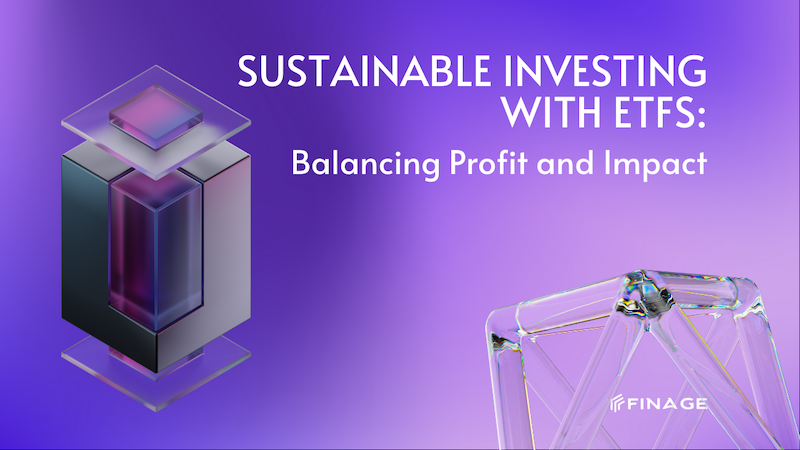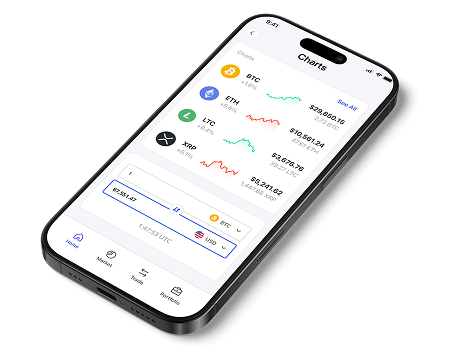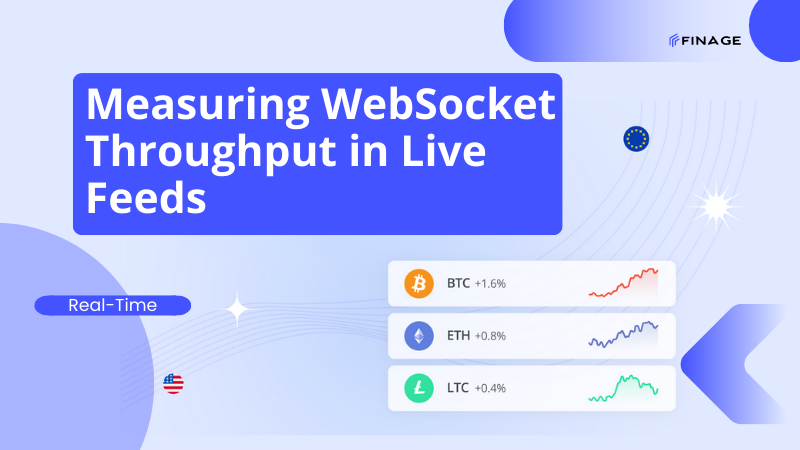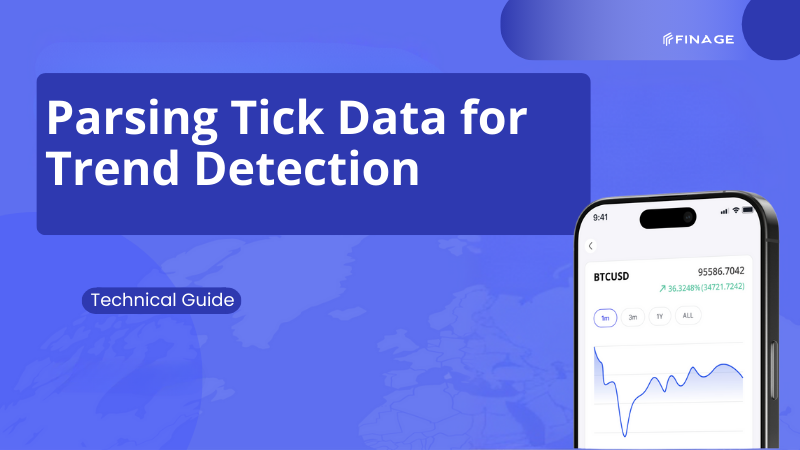Sustainable Investing with ETFs: Balancing Profit and Impact
9 min read • August 2, 2024

Introduction
Sustainable investing has gained significant traction recently, driven by a growing awareness of environmental, social, and governance (ESG) issues. Investors increasingly seek ways to balance profit and impact, aiming to achieve financial returns while contributing positively to society and the environment. Exchange-traded funds (ETFs) have emerged as a popular vehicle for sustainable investing, offering diversification, liquidity, and access to a wide range of ESG-focused strategies. This blog post explores the principles of sustainable investing, the role of ETFs, and methods for balancing profit and impact.
Contents
- Understanding Sustainable Investing
- What is Sustainable Investing?
- The Importance of ESG Factors
- Types of Sustainable Investing
- The Role of ETFs in Sustainable Investing
- What are Sustainable ETFs?
- Benefits of Sustainable ETFs
- Popular Sustainable ETFs
- Strategies for Sustainable Investing with ETFs
- ESG Integration
- Impact Investing
- Thematic Investing
- Evaluating Sustainable ETFs
- ESG Ratings and Metrics
- Performance Analysis
- Transparency and Reporting
- Balancing Profit and Impact
- Setting Investment Goals
- Risk Management
- Long-Term Perspective
- Final Thoughts
Understanding Sustainable Investing
What is Sustainable Investing?
Sustainable investing, also known as responsible investing or ESG investing, involves incorporating environmental, social, and governance (ESG) factors into investment decisions. The goal is to generate long-term financial returns while contributing positively to society and the environment.
Environmental Factors: These include considerations related to climate change, natural resource conservation, pollution, and waste management. Investors assess a company's environmental impact and sustainability practices.
Social Factors: Social factors involve issues related to human rights, labor practices, community relations, and social justice. Companies are evaluated based on their treatment of employees, suppliers, and the communities in which they operate.
Governance Factors: Governance factors focus on corporate governance practices, including board structure, executive compensation, transparency, and shareholder rights. Good governance is essential for long-term business sustainability.
Incorporating ESG factors into investment decisions can provide several benefits:
Risk Mitigation: ESG factors can help identify potential risks that may not be evident through traditional financial analysis. Companies with strong ESG practices are often better positioned to manage regulatory changes, environmental challenges, and social issues.
Enhanced Returns: Studies have shown that companies with robust ESG practices can outperform their peers over the long term. Sustainable investing can lead to improved financial performance by identifying companies that are well-managed and forward-thinking.
Positive Impact: Sustainable investing allows investors to align their portfolios with their values, supporting companies that contribute positively to society and the environment. This approach can drive positive change and encourage more sustainable business practices.
Types of Sustainable Investing
There are several approaches to sustainable investing, each with its own focus and methodology:
Negative Screening: excludes companies or industries that do not meet specific ESG criteria, such as tobacco, firearms, or fossil fuels. This approach aims to avoid investments in businesses that hurt society or the environment.
Positive Screening: Actively selecting companies that demonstrate strong ESG performance. This approach involves identifying and investing in leaders within specific industries based on their ESG practices.
ESG Integration: Incorporating ESG factors into the overall investment analysis and decision-making process. This approach considers ESG risks and opportunities alongside traditional financial metrics.
Impact investing is investing in companies, organizations, or projects with the explicit goal of generating positive social or environmental impact alongside financial returns. Impact investing focuses on measurable outcomes and addressing specific global challenges.
The Role of ETFs in Sustainable Investing
What are sustainable ETFs?
Sustainable ETFs are exchange-traded funds that focus on companies with strong ESG practices. These ETFs provide investors with diversified exposure to ESG-friendly companies and sectors, allowing them to pursue sustainable investing goals through a single investment vehicle.
ESG Criteria: Sustainable ETFs use various ESG criteria to select and weight their holdings. These criteria can include environmental impact, social responsibility, and corporate governance practices.
Index-Based: Many sustainable ETFs are index-based, tracking ESG-focused indices that screen and select companies based on their ESG performance. These indices are often created by financial institutions and data providers specializing in ESG research.
Benefits of sustainable ETFs
Sustainable ETFs offer several benefits for investors:
Diversification: ETFs provide diversified exposure to a broad range of companies and sectors, reducing the risk associated with individual stock investments.
Liquidity: ETFs are traded on stock exchanges, offering high liquidity and flexibility for investors to buy and sell shares throughout the trading day.
Cost-Effectiveness: Sustainable ETFs typically have lower expense ratios compared to actively managed mutual funds, making them a cost-effective option for sustainable investing.
Transparency: Many sustainable ETFs disclose their holdings and ESG criteria, providing transparency and enabling investors to make informed decisions.
Strategies for Sustainable Investing with ETFs
ESG Integration
ESG integration involves incorporating ESG factors into the investment analysis and decision-making process. This approach considers both financial performance and ESG criteria when selecting and weighing ETF holdings.
Holistic Analysis: ESG integration requires a holistic analysis of companies, evaluating their financial health, ESG practices, and long-term sustainability. This approach can help identify companies that are well-managed and positioned for growth.
Risk and Opportunity Assessment: By considering ESG factors, investors can assess potential risks and opportunities that may not be evident through traditional financial analysis. This can lead to more informed investment decisions and improved portfolio performance.
Impact Investing
Impact investing focuses on generating positive social or environmental impact alongside financial returns. Sustainable ETFs can play a role in impact investing by providing exposure to companies and projects that address specific global challenges.
Thematic ETFs: Thematic ETFs target specific themes or sectors related to sustainability, such as clean energy, water conservation, or social justice. These ETFs enable investors to align their portfolios with their values and support impactful initiatives.
Measurable Outcomes: Impact investing emphasizes measurable outcomes and transparency. Investors should look for ETFs that provide clear reporting on their impact metrics and progress toward achieving their goals.
Thematic Investing
Thematic investing involves focusing on long-term trends and themes that are expected to drive future growth. Sustainable ETFs can be used to gain exposure to specific ESG-related themes and capitalize on emerging opportunities.
Clean Energy: Clean Energy ETFs invest in companies involved in renewable energy production, energy efficiency, and related technologies. These ETFs benefit from the global transition towards sustainable energy sources.
Water Conservation: Water conservation ETFs focus on companies that address water scarcity and promote efficient water use. These ETFs target sectors such as water utilities, infrastructure, and technology.
Social Justice: Social Justice ETFs invest in companies that promote social equity, diversity, and inclusion. These ETFs aim to support businesses that prioritize fair labor practices, human rights, and community engagement.
Evaluating sustainable ETFs
ESG Ratings and Metrics
Evaluating sustainable ETFs requires a thorough understanding of their ESG ratings and metrics. Investors should consider the following factors when assessing ESG performance:
ESG Ratings: ESG ratings provide an overall assessment of a company's ESG practices. Rating agencies such as MSCI, Sustainalytics, and FTSE Russell offer ESG ratings for companies and ETFs, helping investors identify strong performers.
Key Metrics: Key ESG metrics include carbon footprint, energy efficiency, labor practices, board diversity, and executive compensation. Investors should look for ETFs that prioritize these metrics and demonstrate strong performance.
Methodology: Understanding the methodology used to evaluate ESG factors is crucial. Investors should ensure that the ETF's ESG criteria align with their values and investment goals.
Performance Analysis
Performance analysis is essential for evaluating the financial returns of sustainable ETFs. Investors should consider both historical performance and future potential:
Historical Returns: Analyzing historical returns helps assess the ETF's performance relative to its benchmark and peers. Investors should look for consistent performance and resilience during market downturns.
Risk-Adjusted Returns: Risk-adjusted returns, such as the Sharpe ratio, provide insights into the ETF's performance relative to its risk. Higher risk-adjusted returns indicate better management of risk and reward.
Tracking Error: Tracking error measures the deviation of the ETF's performance from its benchmark. A lower tracking error indicates better alignment with the benchmark and more reliable returns.
Transparency and reporting
Transparency and reporting are critical for evaluating the impact and effectiveness of sustainable ETFs. Investors should consider the following aspects:
Holdings Disclosure: ETFs that disclose their holdings provide transparency and allow investors to assess the ESG performance of individual companies. Regular updates on holdings are essential for informed decision-making.
Impact Reports: Impact reports provide detailed information on the ETF's social and environmental impact. These reports should include metrics, progress toward goals, and case studies highlighting positive outcomes.
Engagement and Advocacy: Some ETFs engage with companies to promote better ESG practices. Investors should look for ETFs that actively participate in shareholder advocacy and use their influence to drive positive change.
Balancing Profit and Impact
Setting Investment Goals
Setting clear investment goals is essential for balancing profit and impact. Investors should define their financial objectives and ESG priorities as follows:
Financial Objectives: Financial objectives may include capital growth, income generation, or risk management. These goals should align with the investor's time horizon, risk tolerance, and financial needs.
ESG Priorities: ESG priorities reflect the investor's values and desired impact. These may include environmental sustainability, social equity, corporate governance, or specific thematic goals.
Alignment: Aligning financial objectives with ESG priorities helps create a balanced investment strategy that maximizes both profit and impact.
Risk Management
Effective risk management is crucial for sustainable investing. Investors should implement strategies to manage risk while pursuing their ESG goals:
Diversification: Diversifying across asset classes, sectors, and geographies reduces the risk associated with individual investments. Sustainable ETFs offer diversified exposure to ESG-friendly companies and sectors.
Due Diligence: Conducting thorough due diligence on sustainable ETFs helps identify potential risks and ensure alignment with ESG criteria. Investors should review the ETF's methodology, holdings, and performance.
Regular Monitoring: Regularly monitoring the performance and impact of sustainable ETFs helps identify potential issues and make informed adjustments. This includes staying updated on market trends, ESG developments, and regulatory changes.
Long-Term Perspective
Adopting a long-term perspective is essential for achieving sustainable investing goals. Investors should focus on the following aspects:
Patience: Sustainable investing often requires patience, as the benefits of ESG practices and impact initiatives may take time to materialize. A long-term approach allows investors to ride out market volatility and capture growth opportunities.
Resilience: Sustainable ETFs that prioritize ESG factors are often more resilient during market downturns. These ETFs tend to invest in companies with strong governance, risk management, and forward-thinking practices.
Commitment: Committing to a long-term sustainable investing strategy helps drive positive change and encourages companies to prioritize ESG practices. Investors can play a role in shaping a more sustainable future by maintaining their commitment.
Final Thoughts
Sustainable investing with ETFs offers a powerful way to balance profit and impact, allowing investors to achieve financial returns while contributing positively to society and the environment. By understanding the principles of sustainable investing, leveraging the benefits of sustainable ETFs, and implementing effective strategies, investors can create portfolios that align with their values and long-term goals.
Evaluating sustainable ETFs requires a thorough analysis of ESG ratings, performance metrics, and transparency. Setting clear investment goals, managing risk, and adopting a long-term perspective are essential for success in sustainable investing.
As the demand for sustainable investing continues to grow, ETFs will play an increasingly important role in providing accessible, diversified, and impactful investment options. By embracing sustainable investing, investors can contribute to a more sustainable future while achieving their financial objectives.
You can get your CFDs ETFs Market Data with an API key.
Build with us today!
Claim Your Free API Key Today
Access stock, forex and crypto market data with a free API key—no credit card required.

Stay Informed, Stay Ahead
Finage Blog: Data-Driven Insights & Ideas
Discover company news, announcements, updates, guides and more


